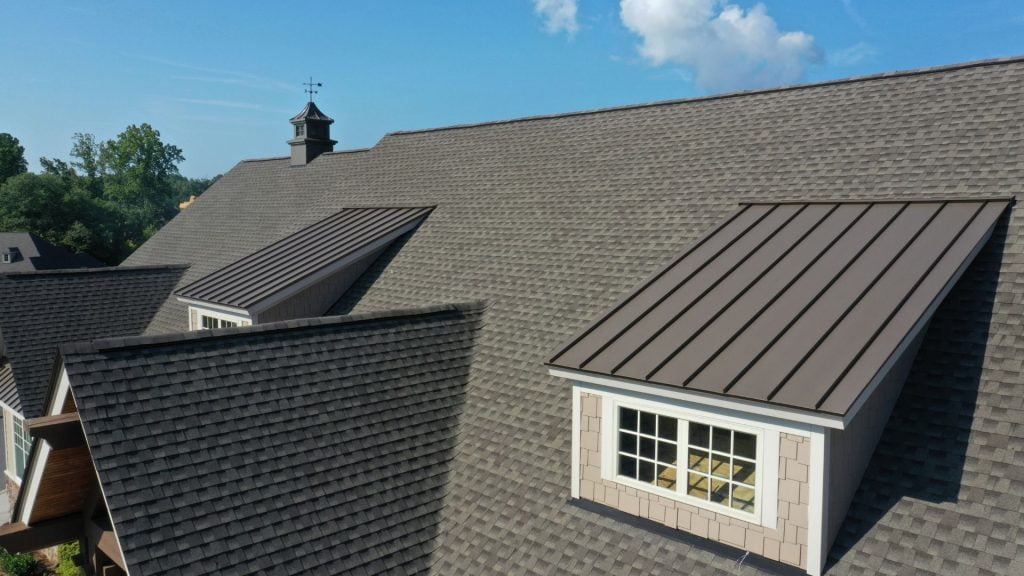In an era where environmental consciousness is at the forefront of our minds, sustainable practices are becoming increasingly essential in all aspects of our lives, including home improvement. When it comes to roofing, incorporating sustainable practices not only benefits the environment but also enhances the long-term health and efficiency of your home. At A-Top Roofing Ltd., we recognize the importance of sustainable roofing, and in this comprehensive guide, we’ll outline key practices to help you make environmentally responsible choices for your roof.
Sustainable Roofing Materials:
Recycled Shingles:
- Consider using recycled shingles, which are manufactured from reclaimed materials. These shingles often have the same durability and performance as traditional ones but with a significantly reduced environmental impact.
Metal Roofing:
- Metal roofing is a highly sustainable option due to its longevity and recyclability. It reflects sunlight, reducing the need for cooling during hot weather, and can be recycled at the end of its lifespan.
Cedar Shakes:
- Cedar shakes are a natural and renewable roofing material. Sourced from sustainably managed forests, cedar offers a classic and environmentally friendly option for homeowners.
Cool Roof Technology:
Reflective Coatings:
- Cool roof technology involves applying reflective coatings to roofing materials. These coatings reflect sunlight and absorb less heat, contributing to a cooler indoor environment and reducing the overall energy consumption of your home.
Energy Efficiency:
- By maintaining lower temperatures on the roof surface, cool roofs enhance energy efficiency. This can lead to decreased reliance on air conditioning systems, ultimately lowering your energy bills.
Climate Adaptation:
- Cool roof technology is particularly beneficial in warmer climates. As temperatures rise globally, adopting these roofing practices helps adapt to changing climate conditions.
Green Roofing:
Living Roofs:
- Green roofing involves the installation of living roofs or rooftop gardens. These systems provide insulation, reduce stormwater runoff, and create a habitat for local wildlife.
Environmental Benefits:
- Green roofs contribute to improved air quality, reduced urban heat island effect, and increased biodiversity. They also absorb carbon dioxide and release oxygen, providing a positive impact on the environment.
Energy Savings:
- The additional insulation provided by green roofs contributes to energy savings. They act as a natural barrier, keeping your home cooler in summer and warmer in winter.
Proper Insulation:
Thermal Efficiency:
- Proper insulation is crucial for maintaining thermal efficiency in your home. It reduces the need for excessive heating or cooling, leading to lower energy consumption and associated greenhouse gas emissions.
Recycled Insulation Materials:
- Choose insulation materials made from recycled or sustainable sources. Many eco-friendly options are available that offer the same, if not superior, insulation properties as traditional materials.
Long-Term Energy Savings:
- Investing in quality insulation not only supports sustainability but also results in long-term energy savings. Reduced energy consumption contributes to a smaller carbon footprint and a more environmentally responsible home.
Solar Roofing Integration:
Harnessing Clean Energy:
- Solar roofing involves integrating solar panels into the roofing structure. This allows homeowners to harness clean, renewable energy from the sun, reducing dependence on non-renewable energy sources.
Financial Incentives:
- Many regions offer financial incentives, tax credits, or rebates for solar installations. These incentives make solar roofing an economically viable and sustainable choice for homeowners.
Energy Independence:
- Solar roofing provides a degree of energy independence. By generating your own electricity, you become less reliant on traditional energy sources, contributing to a more sustainable and resilient energy system.
Rainwater Harvesting:
Collection Systems:
- Install rainwater harvesting systems on your roof to collect and store rainwater. This harvested water can be used for irrigation, reducing the demand on municipal water supplies.
Stormwater Management:
- By capturing rainwater, you contribute to better stormwater management. This helps prevent flooding, erosion, and pollution of local water bodies by reducing the volume of runoff.
Sustainable Landscaping:
- Use harvested rainwater for sustainable landscaping practices, creating a more water-efficient and environmentally conscious outdoor space around your home.
Routine Maintenance and Inspection:
Prolonging Lifespan:
- Regular roof maintenance and inspections are essential for prolonging the lifespan of your roofing materials. This sustainability practice minimizes the need for premature replacements, reducing the environmental impact of roof disposal.
Early Issue Detection:
- Timely inspections allow for the early detection of issues such as leaks or damage. Addressing these problems promptly prevents further damage and minimizes the resources required for repairs.
Efficient Waste Management:
- Proper waste management during roof repairs or replacements is crucial for sustainability. Responsible disposal, recycling, or reusing of materials helps reduce the environmental impact of roofing projects.
Conclusion: A-Top Roofing – Leading the Way in Sustainability
A-Top Roofing Ltd. is committed to leading the way in sustainable roofing practices. We understand that making environmentally responsible choices for your roof is not just about being green; it’s about creating a healthier, more efficient home for you and future generations.
Contact A-Top Roofing Ltd. at 778-874-0421 or [email protected] to explore sustainable roofing options for your home. Experience the perfect fusion of eco-consciousness and expert craftsmanship with A-Top Roofing – Where Sustainability Meets Excellence in Roofing.

